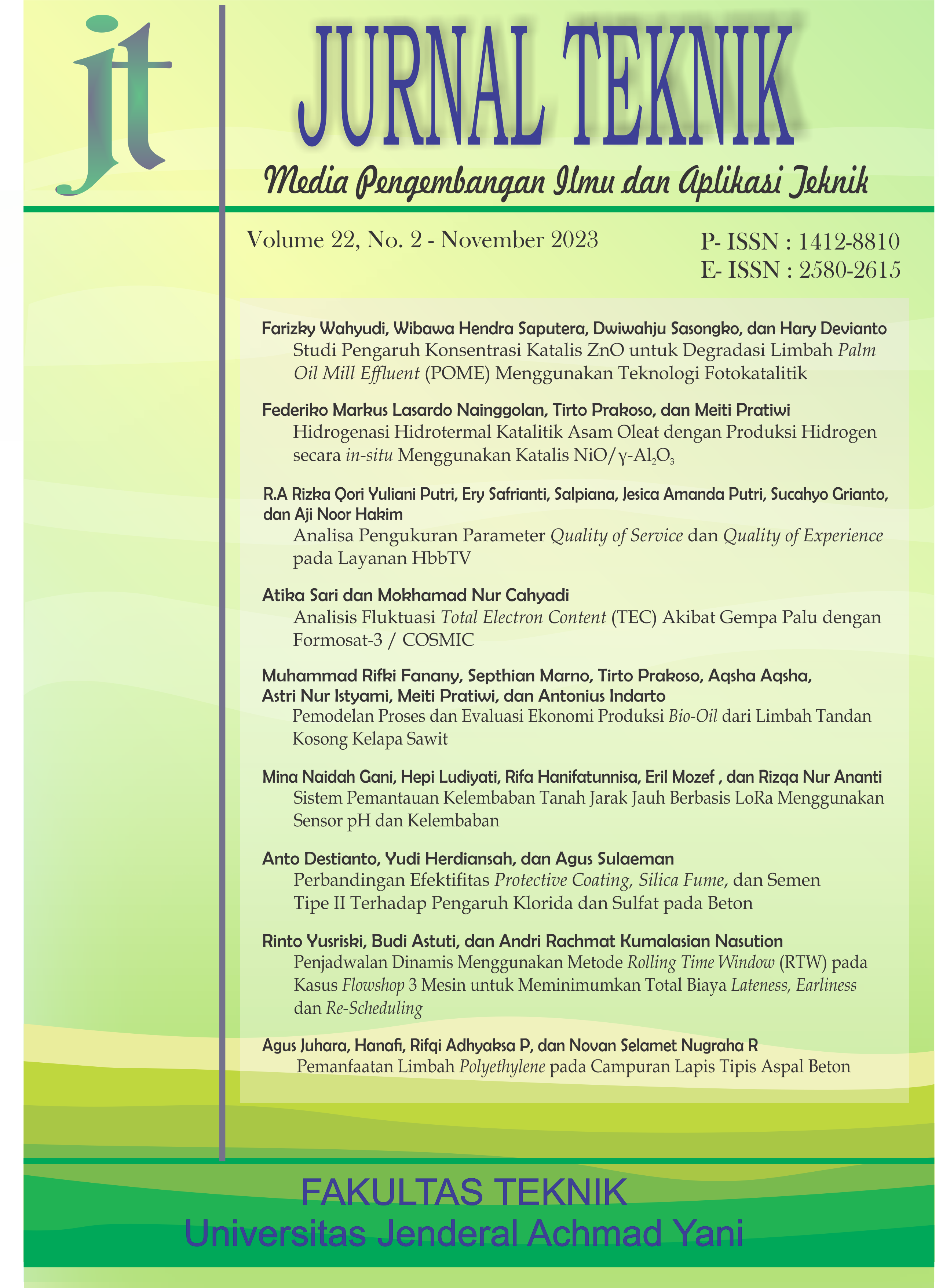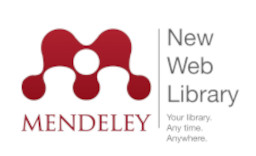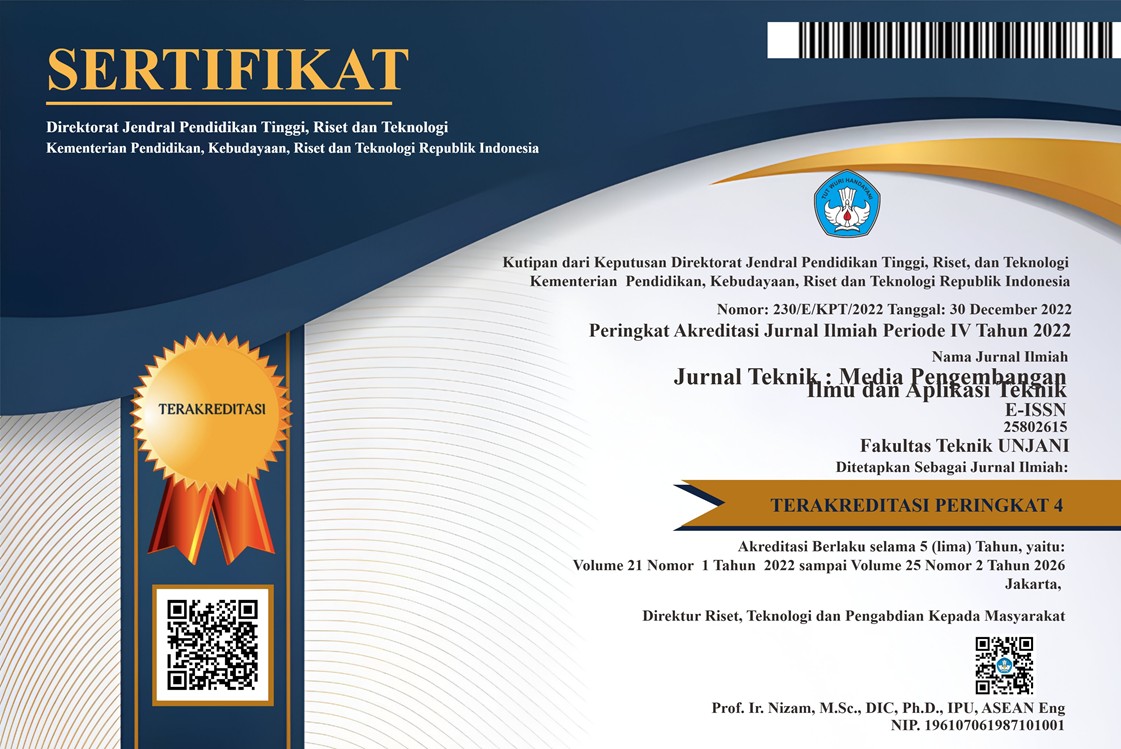Pemanfaatan Limbah Polyethylene pada Campuran Lapis Tipis Aspal Beton
DOI:
https://doi.org/10.55893/jt.vol22no2.495Keywords:
polyethylene, PE, plastic waste, hot rolled sheet, dry methodAbstract
Flexible pavement is a road pavement that uses asphalt as a binder. Asphalt mixture performance needs to be improved by modifying using admixture material to improve its durability and resistance to plastic deformation. To increase the performance of asphalt mixtures, one of the alternatives is to utilize Polyethylene (PE) plastic waste. Hot Rolled Sheet (HRS) has a relatively high asphalt content compared to other types of mixtures because of is waterproof. This study was carried out using the dry method, Polyethylene (PE) plastic waste was added to the aggregate and hot asphalt mixture at the temperature of the mixture. Variations in the content of Polyethylene (PE) plastic waste added are 3%, 3.5%, and 4% by weight of asphalt. The characteristics of the asphalt mixture were the test results showed an increase in stability of 10 - 20% and the melting value was at 3 - 4mm. The residual strength index value shows that the addition of Polyethylene (PE) plastic waste can increase the resistance to damage by a percentage of 0.55% compared to without the addition of Polyethylene (PE) plastic waste. The level of addition of Polyethylene (PE) plastic waste is in the range of 3.5-3.9%.
References
Direktorat Jenderal Bina Marga, Kementerian Pekerjaan Umum : Spesifikasi Umum 2010 (Revisi 3).
Azizah, N., & Rahardjo, B. (2017). KINERJA CAMPURAN HOT ROLLED SHEET-WEARING COURSE (HRS-WC) DENGAN FILLER ABU AMPAS TEBU. Dalam JURNAL BANGUNAN (Vol. 22, Nomor 2). http://antaranews.com,2014
Fatimura, M., Sepriyanti, R., & Yunita, R. (2019). PENGOLAHAN LIMBAH PLASTIK JENIS KANTONG KRESEK DAN GELAS MINUMAN MENGGUNAKAN PROSES PIROLISIS MENJADI BAHAN BAKAR MINYAK (Vol. 4, Nomor 2).
Fikri, H., Subagja, A., & Manurung, A. S. D. (2019). Karakteristik Aspal Modifikasi dengan penambahan Limbah Botol Plastik Polyethylene Terephthalate (PET).
Hermanus, G., Kaseke, O. H., & Jansen, F. (2015). KAJIAN PERBEDAAN KINERJA CAMPURAN BERASPAL PANAS ANTARA JENIS LAPIS TIPIS ASPAL BETON-LAPIS AUS (HRS-WC) BERGRADASI SENJANG DENGAN YANG BERGRADASI SEMI SENJANG. Jurnal Sipil Statik, 3(4), 228–234.
Kholidah, N., Faizal, M., & Said, M. (2019). Science & Technology Indonesia Polystyrene Plastic Waste Conversion into Liquid Fuel with Catalytic Cracking Process Using Al 2 O 3 as Catalyst. Sci. Technol. Indonesia, 3, 1–6. https://doi.org/10.26554/sti.2017.3.1.1-6
Permana, R., & Aschuri, I. (2009). Studi Sifat-Sifat Reologi Aspal yang Dimodifikasi Limbah Tas Plastik. Simposium XII FSTPT.
Setyarini, N. L. P. S. E., & Tajudin, A. N. (2018). Characteristics of Asphalt Concrete Mixed Using Aggregates Coated by Low Density Polyethylene (LDPE) Plastic Waste. 11th Asia PacifiTransportation and the Environment Conference (APTE 2018), 1–4.
Sjahdanulirwan. (2009). Kelebihan Serta Kekurangan Perkerasan Beraspal Dan Beton. Puslitbang Jalan dan Jembatan.
Suroso, T. W. (2008). PENGARUH PENAMBAHAN PLASTIK LDPE (LOW DENSITY POLY ETHILEN) CARA BASAH DAN CARA KERING TERHADAP KINERJA CAMPURAN BERASPAL.
Susanto, H. A., Merdiana, K., & Indriyati, E. W. (2021). PENGARUH PENAMBAHAN LIMBAH PLASTIK POLYPROPYLENE (PP) TERHADAP KETAHANAN RAVELLING CAMPURAN ASPHALT CONCRETE WEARING COURSE (THE EFFECT OF WASTE POLYPROPYLENE (PP) PLASTIC TO THE RAVELLING RESISTANCE OF ASPHALT CONCRETE WEARING COURSE MIXES). Dalam Juli-Desember (Vol. 38, Nomor 2).
Susilowati, A., Wiyono, E., & Pratikto. (2021). PEMANFAATAN LIMBAH PLASTIK SEBAGAI BAHAN TAMBAH PADA BETON ASPAL CAMPURAN PANAS.
Additional Files
Published
Issue
Section
License
Copyright (c) 2023 Agus Juhara, Hanafi Hanafi Hanafi, Rifqi Adhyaksa P, Novan Selamet Nugraha R

This work is licensed under a Creative Commons Attribution-NonCommercial-ShareAlike 4.0 International License.
Penulis yang menyerahkan artikel di Jurnal Teknik: Media Pengembangan dan Aplikasi Teknik untuk keperluan publikasi telah mengetahui bahwa Jurnal Teknik: Media Pengembangan dan Aplikasi Teknik memberikan akses terbuka terhadap konten untuk mendukung pertukaran informasi mengenai ilmu pengetahuan, sesuai dengan penerbitan daring yang berbasis Open Access Journal dan mengikuti Creative Commons Attribution 4.0 International License. Sehingga penulis setuju dengan ketentuan-ketentuan berikut:
1. Penulis memegang hak cipta dan memberikan hak publikasi pertama kepada pihak jurnal dengan pekerjaan secara bersamaan
di bawah Creative Commons Attribution 4.0 International License yang memungkinkan orang lain untuk berbagi pekerjaan
dengan pengakuan kepengarangan karya dan publikasi pertama artikel tersebut di Jurnal Teknik: Media Pengembangan dan
Aplikasi Teknik.
2. Penulis dapat melakukan perjanjian tambahan untuk hak distribusi non-eksklusif artikel yang telah diterbitkan di jurnal ini
(misalnya, posting ke sebuah repositori institusi atau menerbitkannya dalam sebuah buku), dengan mengakui bahwa
publikasi pertama dilakukan di Jurnal Teknik: Media Pengembangan dan Aplikasi Teknik.
3. Penulis diizinkan dan didorong untuk menyebarkan karya mereka secara daring (misalnya, dalam repositori institusi atau
laman web penulis) setelah artikel terbit (proses penerbitan artikel selesai). Hal ini terkait dengan imbas dari pertukaran
informasi yang produktif (Lihat Pengaruh Open Access).












